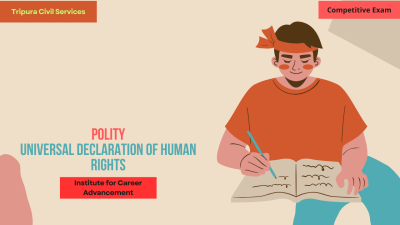Universal Declaration of Human Rights
The Universal Declaration of Human Rights (UDHR), adopted by the United Nations General Assembly on December 10, 1948, is a milestone document in the history of human rights. It consists of 30 articles that outline fundamental human rights to be universally protected. The UDHR establishes the idea that all people, regardless of nationality, ethnicity, religion, or background, are entitled to basic rights and freedoms such as: Equality and Non-Discrimination: Every individual is entitled to all the rights and freedoms without distinction of any kind, including race, color, sex, language, religion, or other status. Right to Life, Liberty, and Security: Every individual has the right to life, liberty, and personal security. Freedom of Expression and Assembly: Everyone has the right to express opinions, to seek, receive, and impart information, and to assemble peacefully. Right to Education: Everyone has the right to free, equal, and quality education at the primary level and to freely choose the pursuit of higher education. Economic, Social, and Cultural Rights: Includes the right to work, social security, adequate living standards, and participation in cultural life. The UDHR serves as a foundational framework for international human rights law and has influenced numerous national constitutions, treaties, and laws aimed at promoting and protecting human rights around the world. 1948 সালের 10ই ডিসেম্বর জাতিসংঘের সাধারণ পরিষদ কর্তৃক গৃহীত মানবাধিকারের সার্বজনীন ঘোষণাপত্র (ইউডিএইচআর) মানবাধিকারের ইতিহাসে একটি মাইলফলক দলিল। এতে 30টি অনুচ্ছেদ রয়েছে যা সর্বজনীনভাবে সুরক্ষিত মৌলিক মানবাধিকারের রূপরেখা তৈরি করে। ইউডিএইচআর এই ধারণাটি প্রতিষ্ঠা করে যে জাতীয়তা, জাতি, ধর্ম বা পটভূমি নির্বিশেষে সমস্ত মানুষ মৌলিক অধিকার এবং স্বাধীনতার অধিকারী যেমনঃ সমতা ও বৈষম্যহীনতাঃ প্রত্যেক ব্যক্তি জাতি, বর্ণ, লিঙ্গ, ভাষা, ধর্ম বা অন্যান্য মর্যাদা সহ যে কোনও ধরনের বৈষম্য ছাড়াই সমস্ত অধিকার ও স্বাধীনতার অধিকারী। জীবন, স্বাধীনতা এবং নিরাপত্তার অধিকারঃ প্রত্যেক ব্যক্তির জীবন, স্বাধীনতা এবং ব্যক্তিগত নিরাপত্তার অধিকার রয়েছে। মতপ্রকাশ ও সমাবেশের স্বাধীনতাঃ প্রত্যেকেরই মতামত প্রকাশ, তথ্য সন্ধান, গ্রহণ ও প্রদান এবং শান্তিপূর্ণভাবে একত্রিত হওয়ার অধিকার রয়েছে। শিক্ষার অধিকারঃ প্রত্যেকেরই প্রাথমিক স্তরে বিনামূল্যে, সমান এবং মানসম্মত শিক্ষার অধিকার রয়েছে এবং উচ্চশিক্ষার জন্য স্বাধীনভাবে বেছে নেওয়ার অধিকার রয়েছে। অর্থনৈতিক, সামাজিক ও সাংস্কৃতিক অধিকারঃ কাজের অধিকার, সামাজিক নিরাপত্তা, পর্যাপ্ত জীবনযাত্রার মান এবং সাংস্কৃতিক জীবনে অংশগ্রহণ অন্তর্ভুক্ত। ইউডিএইচআর আন্তর্জাতিক মানবাধিকার আইনের একটি মৌলিক কাঠামো হিসাবে কাজ করে এবং বিশ্বজুড়ে মানবাধিকার প্রচার ও সুরক্ষার লক্ষ্যে অসংখ্য জাতীয় সংবিধান, চুক্তি এবং আইনকে প্রভাবিত করেছে।
English
Last updated
Sun, 12-Jan-2025



















